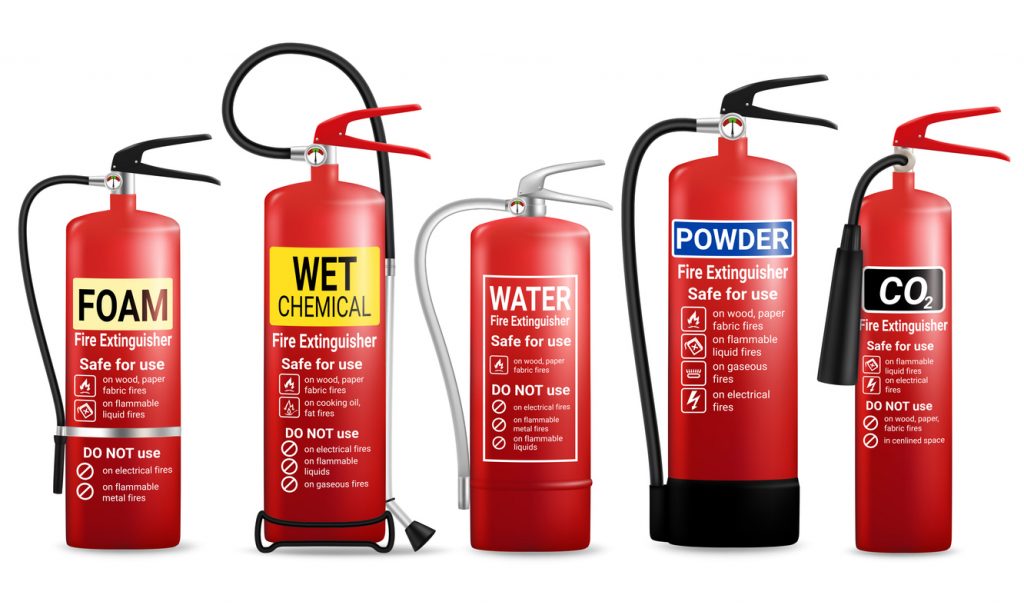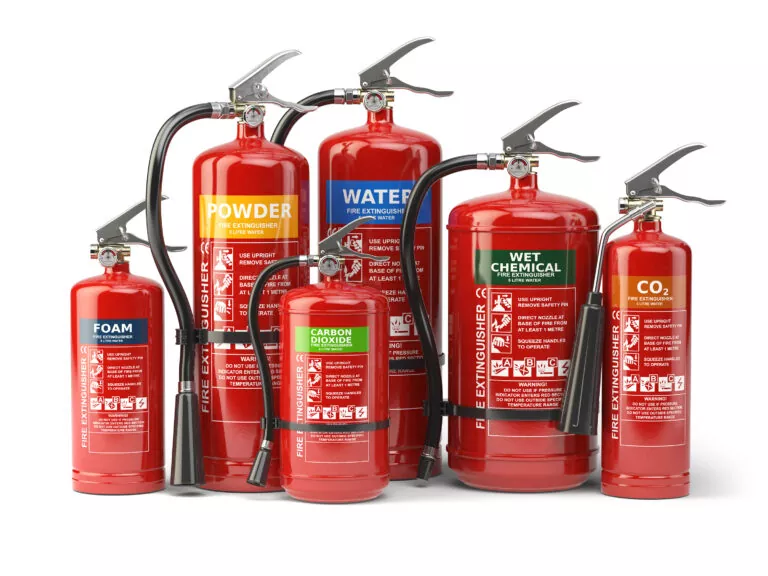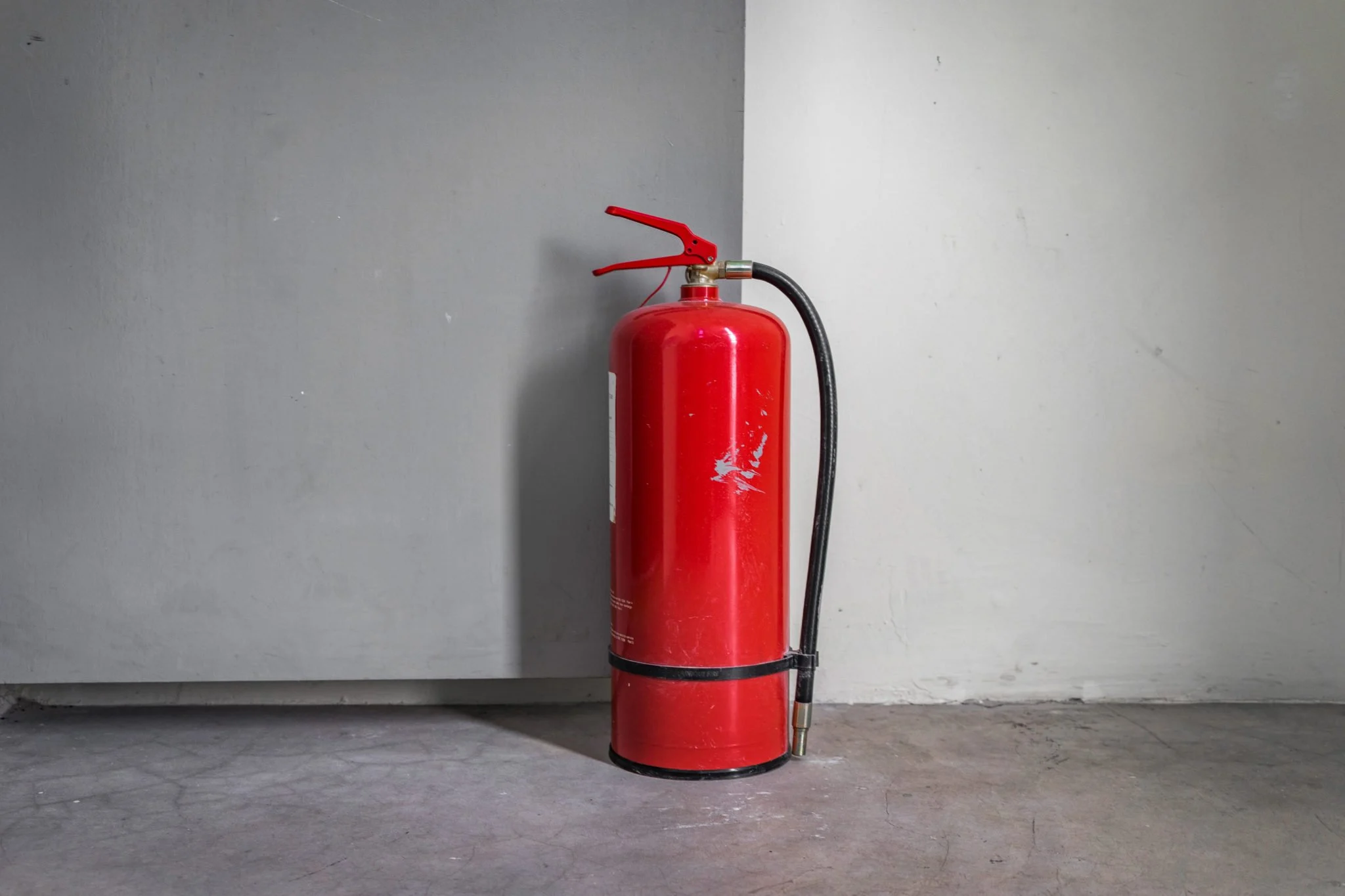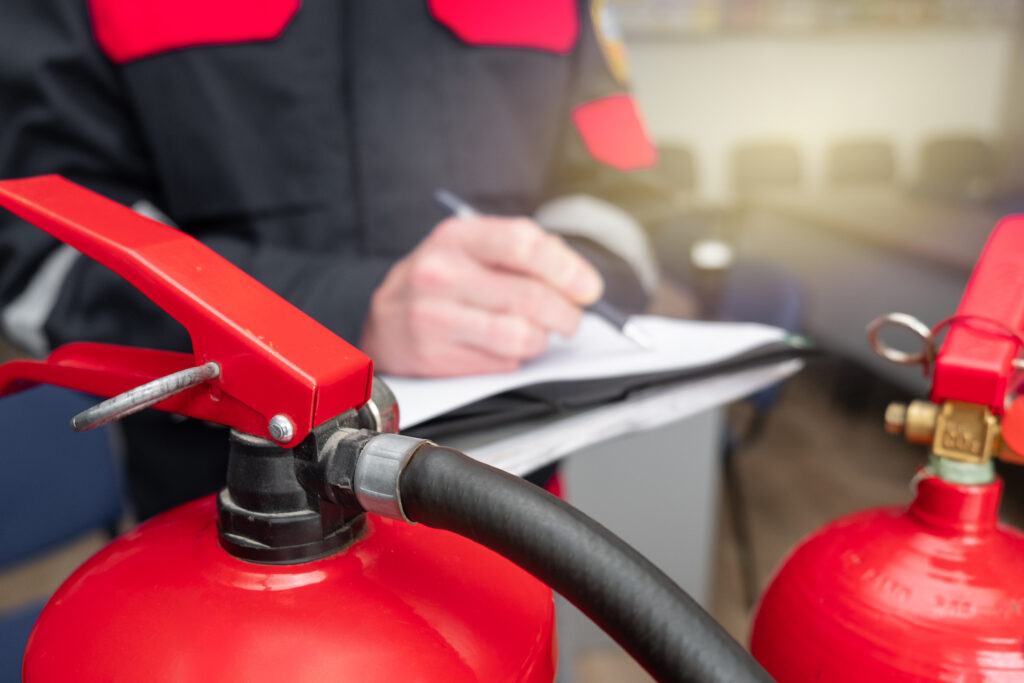In a bustling kitchen, accidents can happen in the blink of an eye. A small flame can quickly turn into a full-blown fire, leaving you and your loved ones in a panic. That’s why having a fire extinguisher in your kitchen is not just a good idea—it’s an essential safety precaution.
A fire extinguisher is your first line of defense when it comes to extinguishing small fires before they escalate. It provides you with the power to take control of an emergency situation and protect your home and those inside it.
In this complete guide, we will explore the importance of having a fire extinguisher in your kitchen and the steps you need to take to ensure you are prepared for any fire-related emergencies. From choosing the right type of fire extinguisher to understanding how to use it effectively, we will cover everything you need to know.
Don’t wait for an accident to happen before realizing the significance of having a fire extinguisher at arm’s reach. Read on to discover how this simple tool can make a world of difference in keeping your kitchen safe.
The importance of fire safety in the kitchen
Kitchens are the heart of the home, where families gather to prepare delicious meals and create lasting memories. However, they can also be a breeding ground for potential fire hazards. From hot stoves and ovens to electrical appliances and flammable materials, the kitchen is a space that requires special attention when it comes to fire safety.
Fires in the kitchen can start quickly and spread rapidly, putting lives at risk and causing significant property damage. According to the National Fire Protection Association (NFPA), cooking is the leading cause of home fires and home fire injuries in the United States. In fact, fire departments respond to an average of 172,900 home cooking fires each year, resulting in 550 civilian deaths, 4,820 civilian injuries, and $1.2 billion in direct property damage.
Recognizing the importance of fire safety in the kitchen is crucial for protecting your home and loved ones. By taking proactive measures, such as installing a fire extinguisher, you can significantly reduce the risk of a kitchen fire and ensure that you are prepared to respond effectively in the event of an emergency. A fire extinguisher can be the difference between a small, manageable fire and a catastrophic blaze that destroys your kitchen and potentially your entire home.

Understanding the different types of fire extinguishers
When it comes to fire extinguishers, not all are created equal. There are several different types of fire extinguishers, each designed to address specific types of fires. Understanding the different classifications and capabilities of fire extinguishers is essential to ensuring you have the right one for your kitchen.
The most common types of fire extinguishers are:
- Class A: These extinguishers are designed to put out fires involving ordinary combustible materials, such as paper, wood, cloth, and plastics.
- Class B: Class B extinguishers are effective against flammable liquid and gas fires, such as those caused by cooking oils, grease, and gasoline.
- Class C: Class C extinguishers are suitable for fires involving energized electrical equipment, such as appliances, wiring, and fuse boxes.
- Class K: Class K extinguishers are specifically designed for fires involving combustible cooking media, such as vegetable oils, animal fats, and cooking greases commonly found in commercial kitchens.
It’s important to note that some fire extinguishers are multi-purpose, meaning they can be used to combat multiple classes of fires. These are often marked with a combination of letters, such as ABC or BC, indicating their capabilities.
When selecting a fire extinguisher for your kitchen, it’s essential to choose one that is rated for Class B and Class K fires, as these are the most likely types of fires to occur in a residential kitchen. Look for extinguishers that are labeled with the appropriate classifications, as well as the size or capacity of the extinguisher, which is typically measured in pounds (lbs) or kilograms (kg).
How to choose the right fire extinguisher for your kitchen
When it comes to selecting the right fire extinguisher for your kitchen, there are several factors to consider to ensure you have the appropriate protection in place.
The first step is to determine the size of the extinguisher you need. The size is typically measured in pounds (lbs) or kilograms (kg) and indicates the amount of extinguishing agent the extinguisher contains. For a residential kitchen, a 5 lb or 2.3 kg extinguisher is generally recommended, as it provides sufficient coverage for small to medium-sized fires.
Next, you’ll want to consider the type of fire extinguisher. As mentioned earlier, the most suitable type for a kitchen is one that is rated for both Class B (flammable liquids and gases) and Class K (combustible cooking media) fires. Look for an extinguisher that is clearly labeled with these classifications, such as “ABC” or “BC-K.”
It’s also important to consider the extinguishing agent used in the fire extinguisher. The most common types are:
- Dry chemical: These extinguishers use a fine, dry powder to smother the fire and interrupt the chemical reaction that sustains the flames.
- Wet chemical: Wet chemical extinguishers are specifically designed for Class K fires, using a potassium-based solution to cool the burning fuel and create a foam that seals the surface to prevent re-ignition.
- Carbon dioxide (CO2): CO2 extinguishers use a pressurized stream of carbon dioxide to displace oxygen and smother the fire.
For a residential kitchen, a dry chemical or wet chemical extinguisher is typically the best choice, as they are effective against the types of fires most commonly found in this environment.
Finally, consider the ease of use and accessibility of the fire extinguisher. Look for one with a simple, straightforward operating mechanism and ensure that it is placed in a location that is easily accessible, such as near the stove or exit, but not too close to potential fire sources.

Proper placement and installation of fire extinguishers in the kitchen
Once you’ve selected the right fire extinguisher for your kitchen, the next step is to ensure it is properly placed and installed to maximize its effectiveness in the event of an emergency.
The ideal location for a fire extinguisher in the kitchen is within easy reach, typically 4 to 5 feet from the ground and near an exit or the main cooking area. This ensures that you can quickly access the extinguisher if a fire breaks out, without having to navigate around obstacles or search for it in a panic.
When mounting the fire extinguisher, make sure it is securely fastened to the wall or a sturdy surface, using the appropriate hardware. The extinguisher should be placed in a visible, well-lit area, and the mounting height should be appropriate for all members of the household to access it easily.
It’s also important to ensure that the fire extinguisher is not obstructed by other objects or appliances. Keep the area around the extinguisher clear, with a minimum of 3 feet of clearance on all sides, to allow for easy access and use.
In addition to proper placement, regular inspections and maintenance of your fire extinguisher are crucial. Familiarize yourself with the manufacturer’s instructions and check the pressure gauge, hose, and nozzle regularly to ensure the extinguisher is in good working condition. Replace or recharge the extinguisher as needed, and never hesitate to use it if a fire breaks out in your kitchen.
Steps to take in case of a kitchen fire
Despite your best efforts to prevent kitchen fires, accidents can still happen. In the event of a fire, it’s essential to know the proper steps to take to ensure your safety and effectively extinguish the flames.
The first and most important step is to remain calm. Panic can lead to poor decision-making and increase the risk of injury or property damage. Take a deep breath and assess the situation quickly.
If the fire is small and contained, such as a grease fire on the stovetop, you may be able to extinguish it using your fire extinguisher. Approach the fire slowly and carefully, making sure to stand a safe distance away. Follow the PASS method:
- Pull the pin: This will break the tamper seal and allow you to discharge the extinguisher.
- Aim the nozzle: Direct the extinguisher’s stream at the base of the fire, not the flames.
- Squeeze the handle: Apply steady pressure to release the extinguishing agent.
- Sweep side to side: Move the extinguisher in a sweeping motion to cover the entire area of the fire.
If the fire is too large or has already spread, do not attempt to extinguish it yourself. Immediately evacuate the kitchen and the entire home, closing doors behind you to contain the fire. Once outside, call the fire department and wait for their arrival.
Never use water to extinguish a grease or electrical fire, as it can cause the flames to spread and potentially lead to serious injury. Additionally, never try to move a burning pan or pot, as this can cause the fire to spread and put you at risk of severe burns.
Remember, your safety and the safety of your loved ones should always be the top priority. If a fire cannot be quickly extinguished, evacuate the area immediately and let the professionals handle it.

Maintenance and inspection of fire extinguishers
Proper maintenance and regular inspection of your kitchen fire extinguisher are essential to ensuring it will be ready and effective in the event of an emergency. Neglecting this crucial step can lead to a malfunctioning or expired extinguisher, rendering it useless when you need it most.
The first step in maintaining your fire extinguisher is to check the pressure gauge regularly. The gauge should indicate that the extinguisher is fully charged and ready for use. If the needle is in the “recharge” or “empty” zone, it’s time to have the extinguisher serviced or replaced.
In addition to checking the pressure, you should also inspect the hose and nozzle for any signs of damage or obstruction. Make sure the hose is flexible and the nozzle is not clogged. If you notice any issues, have the extinguisher serviced by a professional immediately.
It’s also important to check the expiration date on the fire extinguisher. Most extinguishers have a lifespan of 5 to 15 years, depending on the type and manufacturer. Once the extinguisher reaches its expiration date, it should be replaced, even if it appears to be in good working condition.
To ensure your fire extinguisher is always ready for use, consider scheduling an annual inspection by a certified fire protection professional. They can perform a thorough examination, test the extinguisher’s functionality, and provide any necessary maintenance or repairs.
Remember, a well-maintained fire extinguisher can be the difference between a small, manageable kitchen fire and a devastating blaze. By staying diligent with your extinguisher’s upkeep, you can have peace of mind knowing that you are prepared to respond quickly and effectively in an emergency.
Common mistakes to avoid when using a fire extinguisher
While fire extinguishers are essential safety devices, they can only be effective if used properly. Failing to follow the correct procedures or making common mistakes can lead to disastrous consequences in the event of a kitchen fire.
One of the most common mistakes is attempting to extinguish a fire that is already too large or out of control. Fire extinguishers are designed for small, contained fires, and trying to put out a large blaze can be futile and even dangerous. If the fire has already spread significantly, it’s best to evacuate the area and call the fire department immediately.
Another mistake to avoid is using the wrong type of fire extinguisher for the type of fire. As discussed earlier, different fire extinguishers are designed to tackle specific classes of fires. Using an inappropriate extinguisher can be ineffective and, in some cases, even make the fire worse. Always ensure that you have the right type of extinguisher for the fire you are trying to put out.
It’s also important to avoid aiming the extinguisher’s stream at the wrong part of the fire. The proper technique is to aim the nozzle at the base of the flames, not the visible part of the fire. Directing the stream at the flames themselves can cause the fire to spread and become more difficult to control.
Additionally, many people make the mistake of not maintaining their fire extinguishers properly. Neglecting to check the pressure, hose, and nozzle can lead to a malfunctioning extinguisher when you need it most. Regular inspections and maintenance are crucial to ensuring your extinguisher is always ready for use.
Finally, one of the most significant mistakes is failing to have a fire extinguisher in the kitchen at all. Without this essential safety device, you are leaving your home and loved ones vulnerable to the devastating consequences of a kitchen fire. Don’t take the risk – make sure you have a properly maintained fire extinguisher in your kitchen at all times.

Additional fire safety measures for the kitchen
While a fire extinguisher is a critical component of kitchen fire safety, it’s not the only measure you should take to protect your home and family. Incorporating additional fire safety practices can further enhance your preparedness and reduce the risk of a kitchen fire.
One essential step is to ensure your kitchen is equipped with working smoke alarms. These devices can detect the presence of smoke and alert you to a potential fire, giving you valuable time to respond and take action. Install smoke alarms in the kitchen, as well as in other areas of your home, and test them regularly to ensure they are functioning properly.
Another important measure is to keep your kitchen clean and organized. Regularly remove grease buildup from surfaces, such as the stovetop, oven, and range hood. This helps prevent the accumulation of flammable materials that can easily ignite. Additionally, keep the area around the stove clear of any combustible items, such as towels, oven mitts, or paper products.
It’s also a good idea to establish a “no-cook zone” around the stove, especially if you have young children in the home. This designated area should be kept clear, with a minimum of 3 feet of space around the stove, to prevent accidental contact with hot surfaces or spills that could lead to a fire.
When it comes to cooking, always remain attentive and avoid leaving the kitchen while food is cooking on the stovetop. If you must step away, set a timer to remind you to check on the food regularly. Additionally, consider investing in automatic shut-off devices for your stove or oven, which can help prevent fires in the event you forget to turn off the appliance.
Finally, make sure you have a well-stocked first-aid kit in your kitchen, in case of minor burns or other injuries that may occur during a fire-related incident. Familiarize yourself with basic first-aid procedures, and consider taking a CPR or emergency response training course to be better prepared.
By incorporating these additional fire safety measures, you can create a comprehensive plan to protect your kitchen and your family from the devastating effects of a fire.
Fire safety training and certifications
While having a fire extinguisher and following basic fire safety practices are crucial, taking the time to receive formal fire safety training can provide you with invaluable knowledge and skills that could make all the difference in an emergency situation.
Many local fire departments and community organizations offer fire safety courses and certification programs that cover a wide range of topics, including the proper use of fire extinguishers, fire prevention strategies, and emergency response procedures. These training sessions can teach you how to effectively assess and respond to different types of fires, as well as provide hands-on experience in using fire extinguishers.
Completing a fire safety training course can equip you with the confidence and competence to act quickly and decisively in the event of a kitchen fire. You’ll learn the best practices for identifying fire hazards, preventing fires from occurring, and using fire extinguishers to extinguish small, contained blazes before they have a chance to grow.
In addition to general fire safety training, some individuals may also choose to pursue specialized certifications, such as those offered by the National Fire Protection Association (NFPA) or the American Red Cross. These certifications can demonstrate your commitment to fire safety and your ability to respond effectively in emergency situations.
Investing in fire safety training and certifications not only benefits you and your family but can also be valuable for those who host frequent gatherings or events in their homes. By showcasing your fire safety expertise, you can provide peace of mind to your guests and ensure that your kitchen is a safe and secure environment for all.
Remember, when it comes to fire safety, knowledge is power. By taking the time to educate yourself and receive formal training, you can be better prepared to protect your home and loved ones in the event of a kitchen fire.
Conclusion: The peace of mind that comes with having a fire extinguisher in your kitchen
In the bustling heart of your home, the kitchen is where memories are made, meals are shared, and life unfolds. But with the constant presence of heat, flames, and flammable materials, it is also a space that requires vigilance and preparedness when it comes to fire safety.
A fire extinguisher is a simple, yet essential tool that can make all the difference in keeping your kitchen – and your family – safe from the devastating effects of a fire. By having a properly chosen, maintained, and accessible fire extinguisher in your kitchen, you can take control of an emergency situation and extinguish a small fire before it has the chance to grow and cause irreparable damage.
The peace of mind that comes with knowing you are prepared for a kitchen fire is priceless. You can rest easy, knowing that you have the power to act quickly and effectively to protect your home and loved ones. And in the unfortunate event that a fire does occur, you can face the situation with a clear head and the confidence that you have the right tools and knowledge to handle it.
Don’t wait for a tragedy to strike before realizing the importance of fire safety in the kitchen. Take the time to educate yourself, choose the right fire extinguisher, and ensure it is properly placed and maintained. By doing so, you are making a proactive investment in the well-being of your family and the safety of your home.
Remember, a fire extinguisher is your first line of defense against kitchen fires, but it’s just one part of a comprehensive fire safety plan. Incorporate additional measures, such as smoke alarms, fire safety training.
Protect Your Home with a Reliable Kitchen Fire Extinguisher
Don’t wait for a fire emergency to strike—equip your kitchen with a top-quality fire extinguisher today. Contact Blaze Fire Protection for expert advice and installation services.



